There is no arguing that proper currant care extremely important for the plant. Watering, top dressing, pest protection - These items are usually not objectionable, but pruning in the fall for beginners may not seem like an important element of care. This is completely wrong, since pruning directly affects future yields, and it is very important to take into account all the subtleties of this delicate matter.
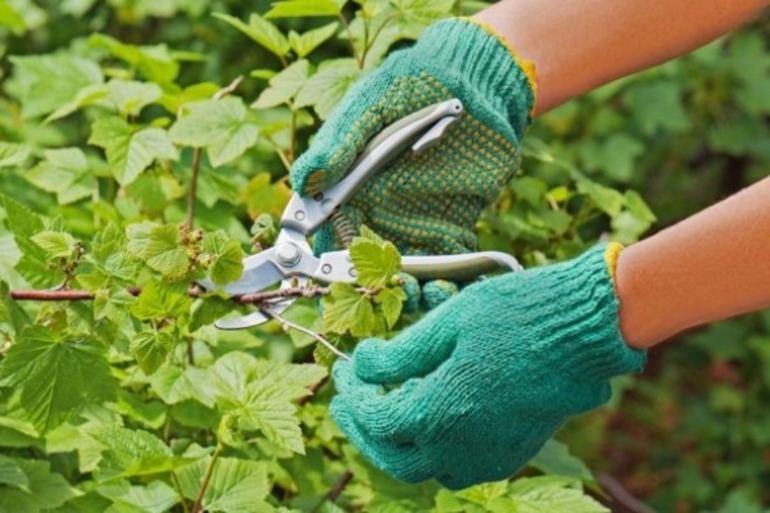
Content
Need to trim
Despite the fact that currants are considered quite unpretentious plants, they are able to complicate the work of the gardener precisely with their active growth. The fact is that an actively grown currant bush begins to bear fruit much worse, since fruit buds appear only on young shoots. As soon as they cross the line at 5 years, the formation of fruits decreases sharply.
There is another reason for pruning bushes: excessively dense thickets make it difficult to see, which means that the gardener can easily miss the infection of the plant with fungus or pests. Sick currants also will not be able to give a rich harvest. Besides timely pruning able to extend the life of the plant several times, not to mention the fact that a neatly trimmed bush looks much more aesthetically pleasing.
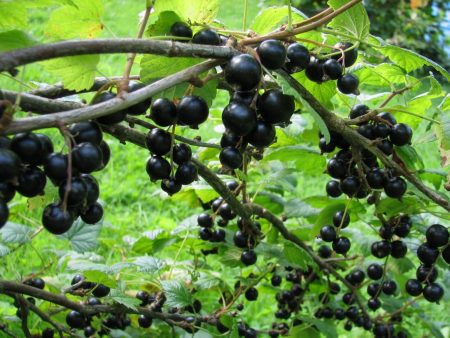 You may be interested in:
You may be interested in:Tool list
You can trim the branches with any sharp object, but in order to carry out the procedure as efficiently as possible, it is advisable to take into account the features of different tools. It is best if there is a whole set in the gardener's economy, which will include the following things:
- Secateurs. These tools look like a hybrid of scissors and pliers and are used to trim thin, not more than 30 mm, twigs and cuttings. Both unilateral and bilateral varieties are used. Defining a good pruning shears is quite simple: it should not wrinkle and “bite” wet paper when checking.
- Gardening scissors. This item is part of the arsenal of many gardeners, and this is not surprising: good scissors help cut branches as evenly as possible. Usually they are used to form bushes “according to the pattern”.
- Hacksaws and garden saws. Hacksaws help to cope with almost any dry branch (thickness from 30 mm to 50), and a special sharpening of the teeth leaves neat, even cuts. True, we must remember that the garden hacksaw differs from the usual one and works effectively only when moving “towards oneself”.
- Brush cutters. A simple but at the same time valuable type of garden supplies. It is irreplaceable to cut the thickets, cut dry branches and give the desired appearance to the bush.
- Delimbers. This tool in its appearance is very similar to an ordinary secateurs, differing only in longer handles. It is this design detail that allows the gardener to get to hard-to-reach thickets and cut branches that would otherwise be difficult to reach.
 You may be interested in:
You may be interested in:Features of cutting currants
So, it is obvious that fruit currants periodically need pruning.But, as in any other business, a lot of pitfalls can wait for an inexperienced gardener here. The scheme for pruning currants in autumn is not very complicated, however, it is necessary to take into account some nuances that will help to implement it correctly and not injure the plant.
Time frame
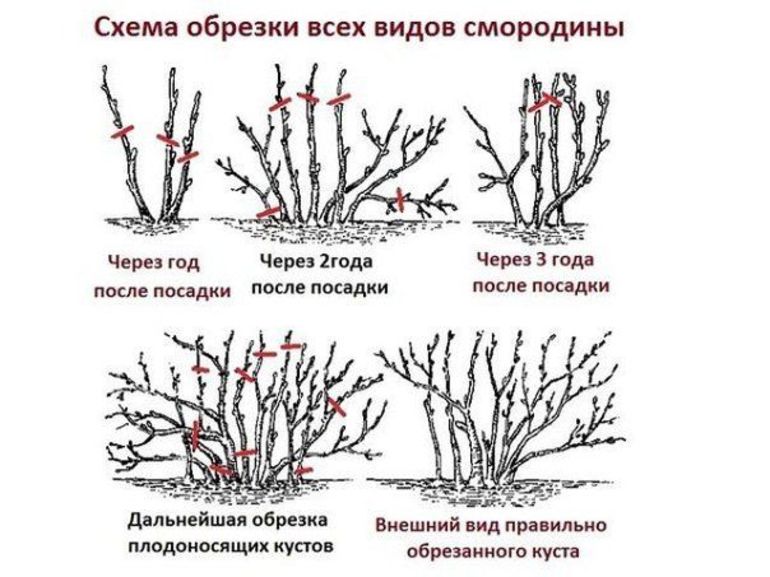
There are two periods for pruning currants - these are spring and autumn. It is necessary to take into account some features of each of these periods, since they are not equivalent. In spring, pruning is carried out in order to remove frozen and broken branches, and has the function of easy cleaning. This procedure is carried out when the street has already become warm, but before buds open, because otherwise the plant will run out of juice and spend too much energy on restoration.
Cutting currants in autumn is considered optimal. Usually it is held in late October or even in November, when the plant’s vegetation processes almost stop. During this period, the chance of harming currants is much lower than at other times of the year, and the absence of foliage allows you to better assess the condition of the branches and build a plan for pruning.
If you cut the branches of the currant too early, then the plant may begin to recover instead of preparing for winter. And then the hit frosts can seriously damage it.
 You may be interested in:
You may be interested in:General scheme
If the currant is grown as a fruit crop, and not an ornamental plant, sanitary pruning will have to be done annually: remove damaged and old branches. At the same time, it is necessary to take into account some subtleties that will not allow the plant to be harmed and will contribute to its active bearing. Black currant pruning pattern in autumn It looks something like this:
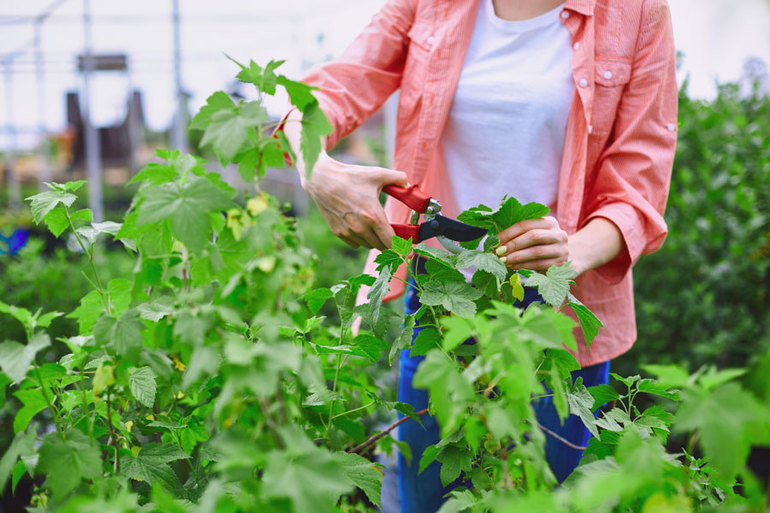
- Damaged and diseased branches must be cut completely, trying not to leave large stumps after them. The same applies to old branches that have reached the age of five: they are easily recognizable by thickness and dark bark, while young shoots are usually thin and light brown.
- Low-growing branches that almost touch the ground are also best removed because they do not receive enough light for good fruiting.
- Branches growing deep into the bush are also recommended to be removed so that they do not thicken the bush and do not block sunlight.
- It is also necessary to remove part of the annual shoots. Usually, during the autumn pruning, 4–5 of the strongest young shoots are left, while the rest are completely cut so as not to thicken the bush.
- Young branches that have reached the age of 2-3 years also need pruning. For their best branching, it is recommended to remove the annual growth with fewer kidneys.
Bush rejuvenation
Sometimes it may turn out that a novice gardener gets a garden with existing old currant bushes: in the case of black - these are plants that have reached the age of five, and in the case of red or white - eight years. I don’t want to remove a strong plant yet, but at the same time, problems with fruiting are already noticeable.
What to do? You can rejuvenate the old currant bush. Cutting scheme in the fall, if you imagine it step by step, will look like this:
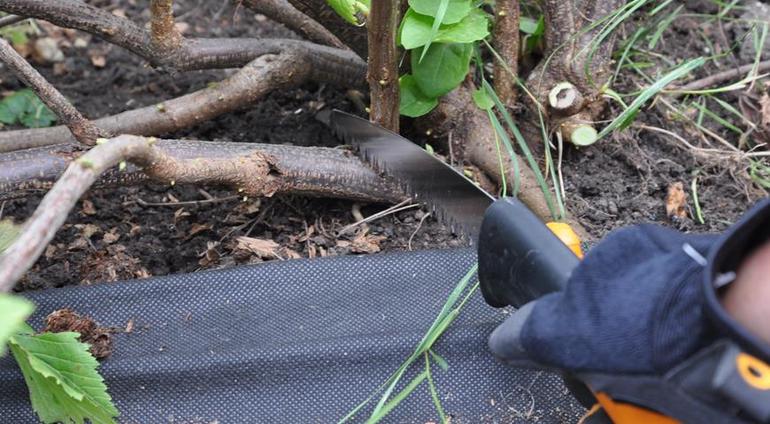
- The plant must be carefully examined and cut off all the old branches, leaving only those that have not yet reached the age of five. They need to be cut almost flush with the ground, leaving virtually no stumps.
- It is desirable to shorten young branches to a length of 10-15 cm, this will contribute to the branching of the bush. In this case, it is necessary to ensure that the kidneys are not damaged.The cut should be above them by about 0.5 cm, at an angle of no more than 50 degrees.
- After such a cardinal pruning, the plant must be fed so that it recovers faster.
- The next year, it is necessary to remove some of the old branches again, leaving no more than twenty of the strongest.
Differences of different types
A beginner gardener needs to remember: pruning black, red and white currants is slightly different, due to the individual characteristics of the varieties. In particular, they have a slightly different bush structure and fruiting time, and this must be taken into account when planning nursing procedures:
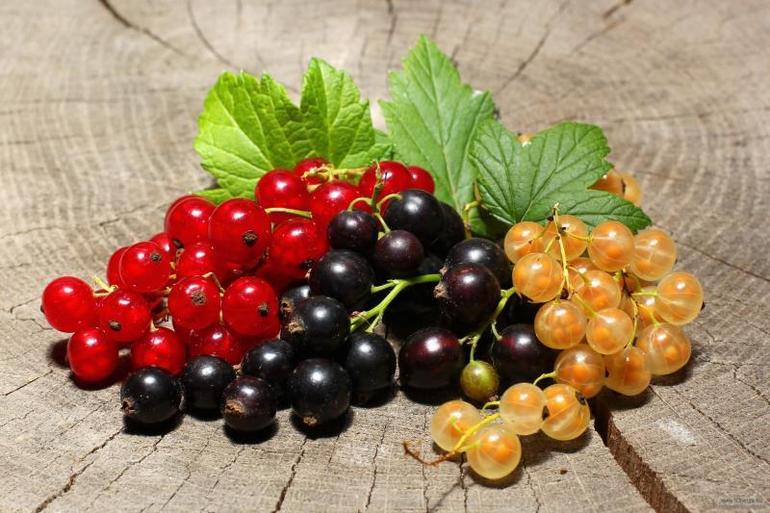
- The branches of red and white currants are able to bear fruit abundantly longer, so there is no need to remove them after a five-year milestone. Often, branches that have reached 8-10 years are considered to be removed.
- Unlike black, white and red currants do not need to pinch the upper part of the shoots, since it is there that the fruit buds are located.
- Red and white currants are recommended to leave about as many young shoots as old ones. This contributes to the rejuvenation of the bush and its better fruiting.
However, if you keep in mind features of each grade, you can achieve significantly higher yields, which will undoubtedly please any gardener.

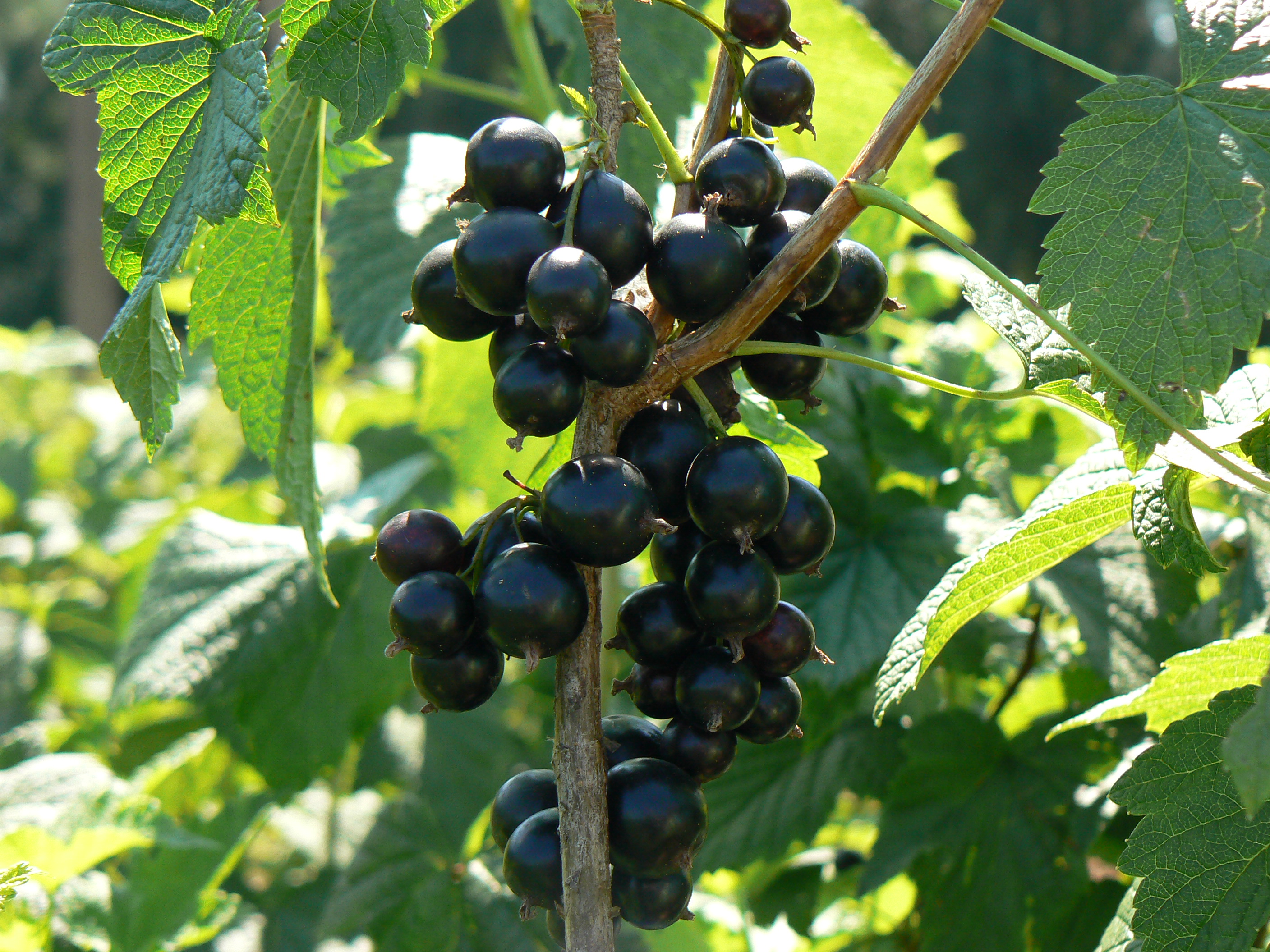 Blackcurrant: pruning in autumn, rejuvenation of the old bush, preparation for winter
Blackcurrant: pruning in autumn, rejuvenation of the old bush, preparation for winter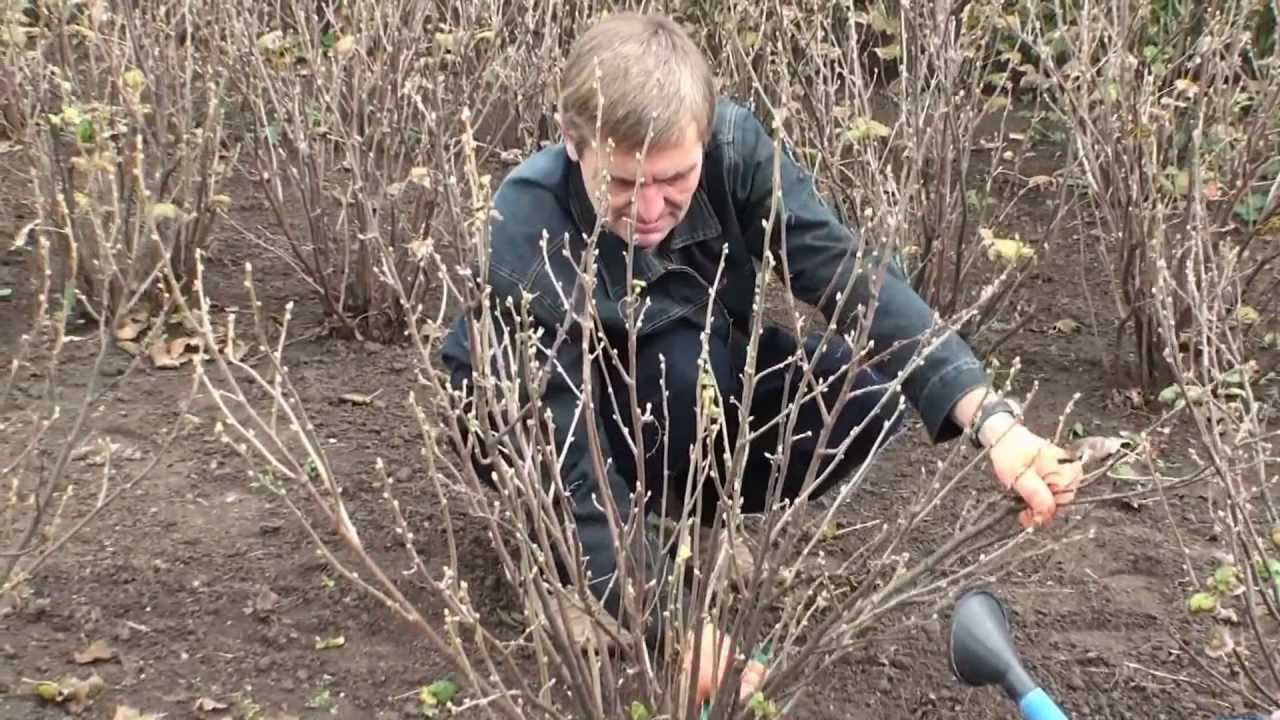 Autumn currant pruning scheme for beginners
Autumn currant pruning scheme for beginners Currant care in autumn and preparation of bushes for winter
Currant care in autumn and preparation of bushes for winter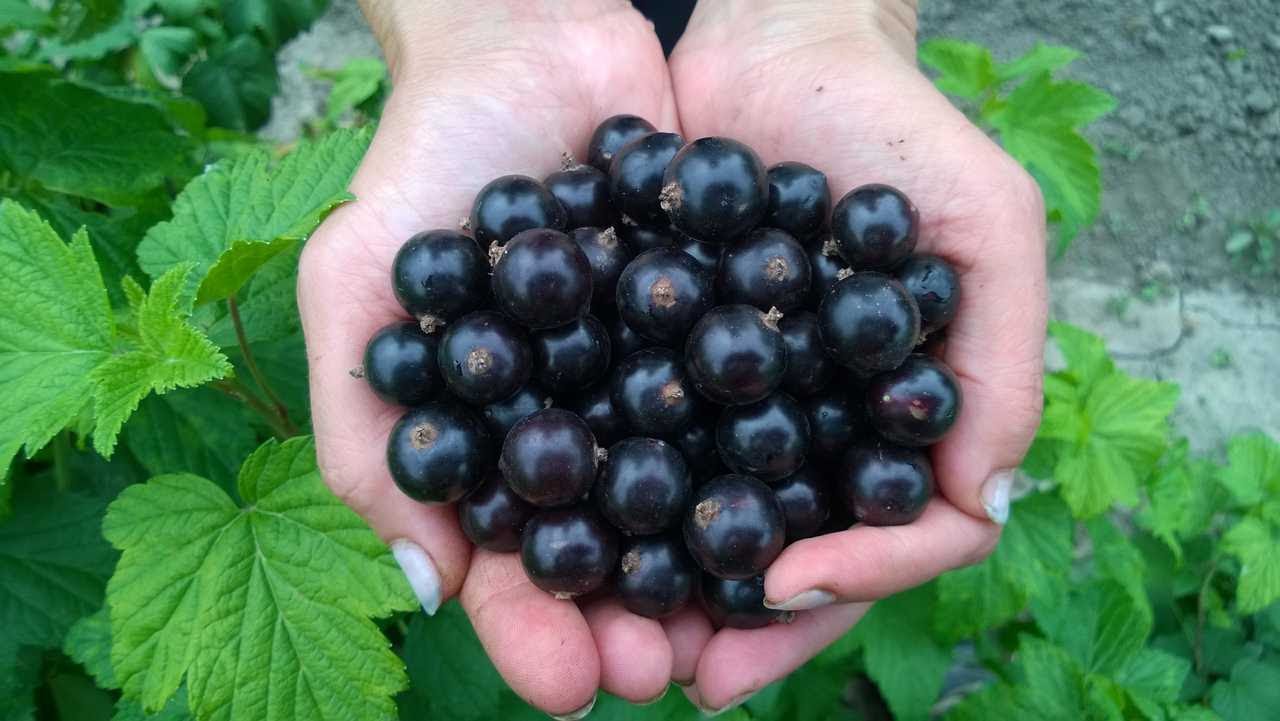 It's time to feed the currants - the best feeding
It's time to feed the currants - the best feeding